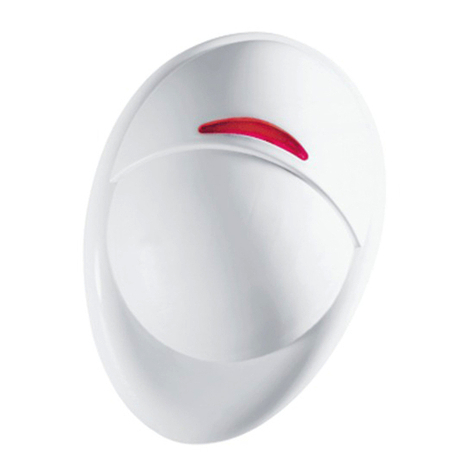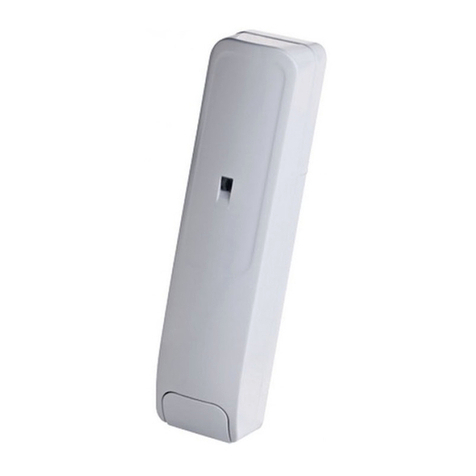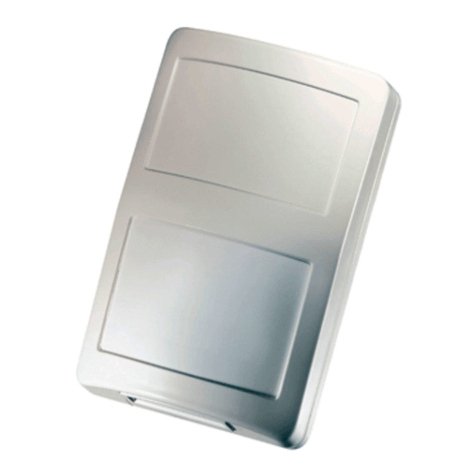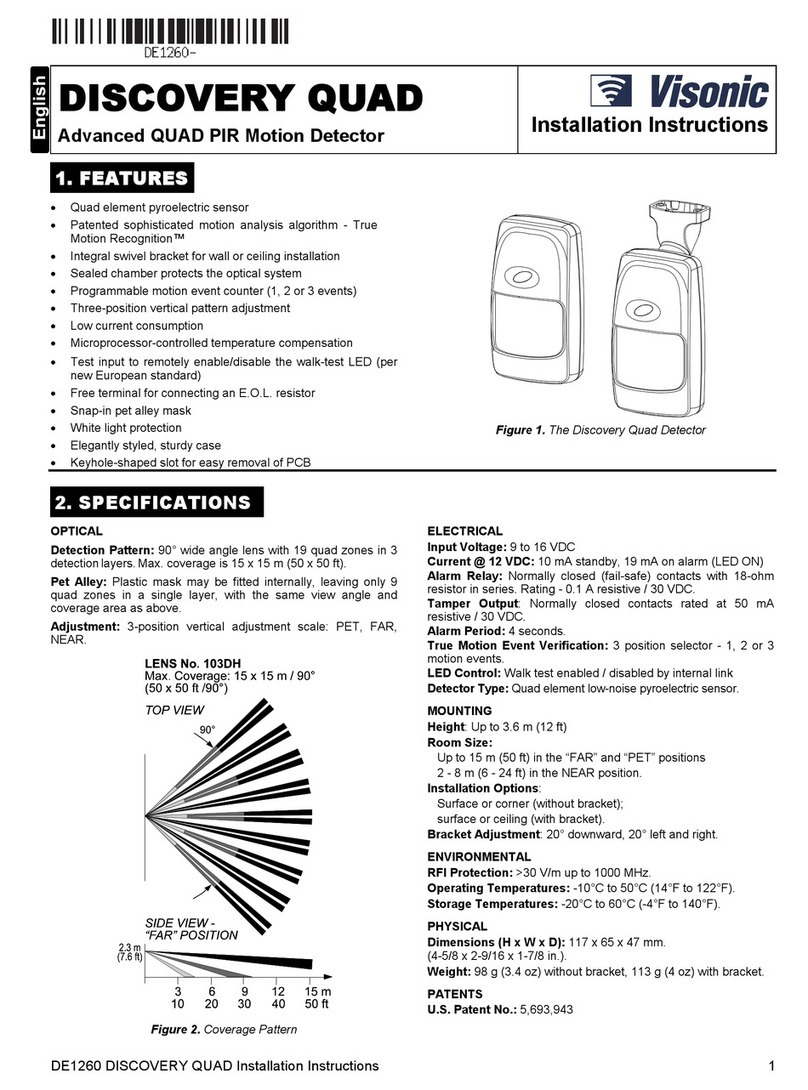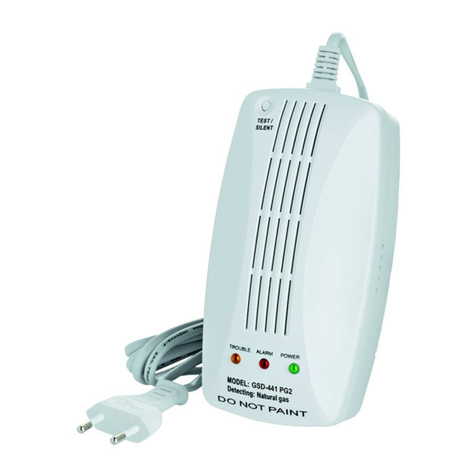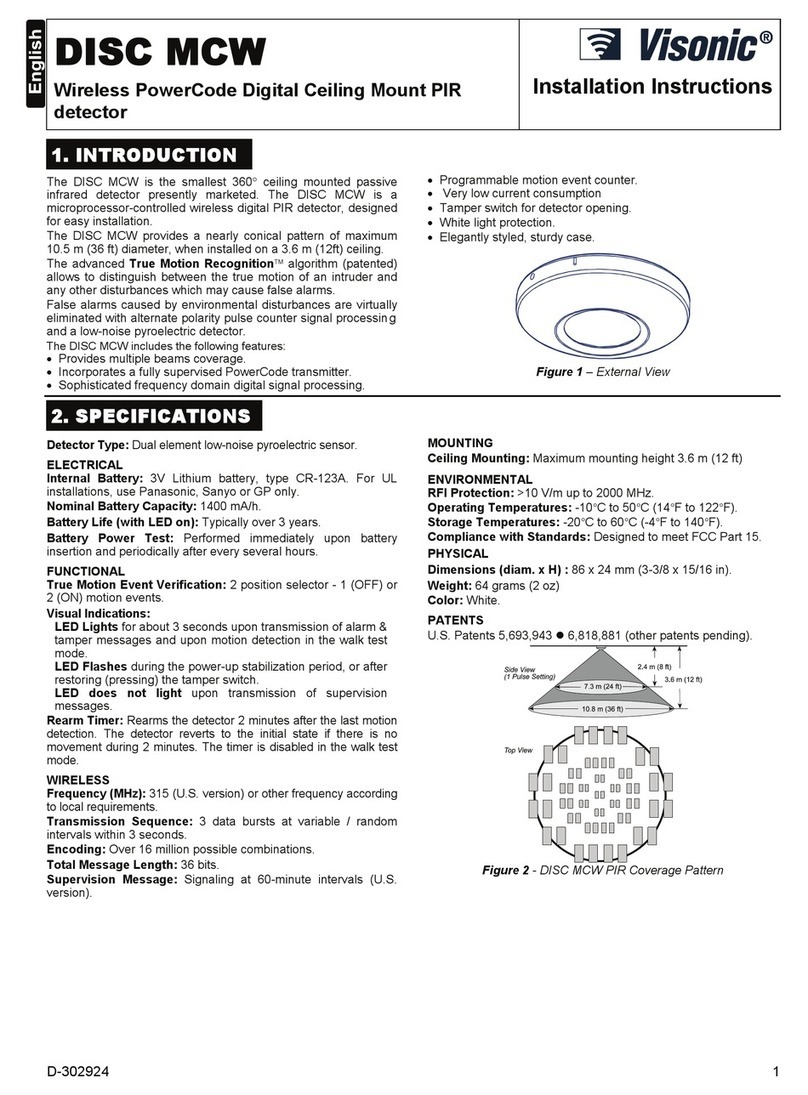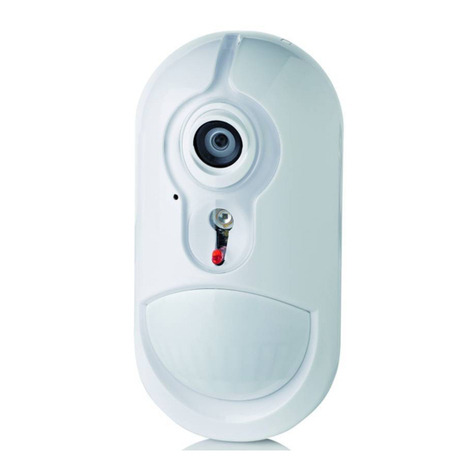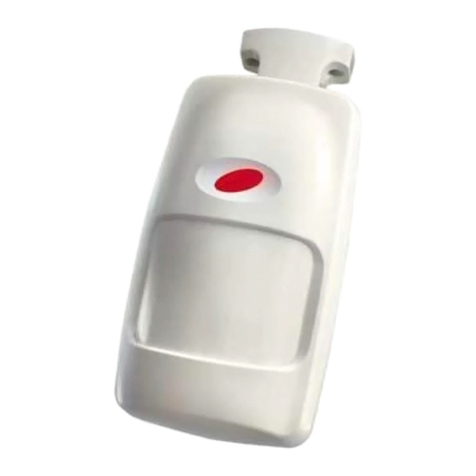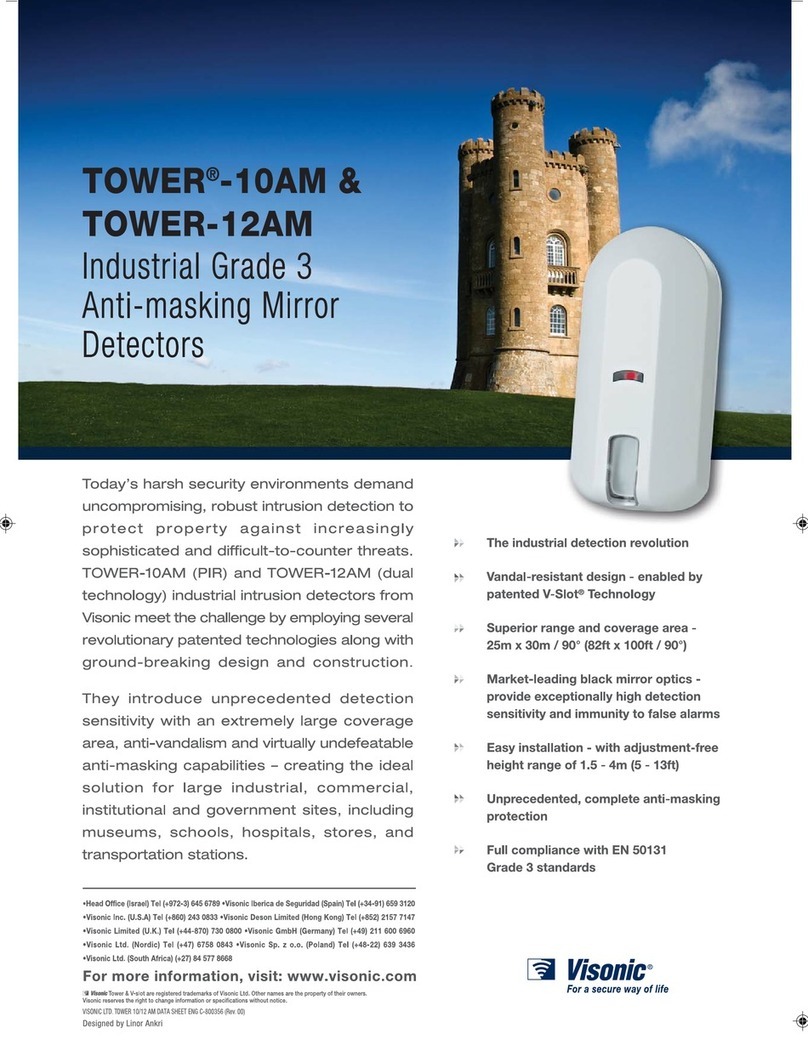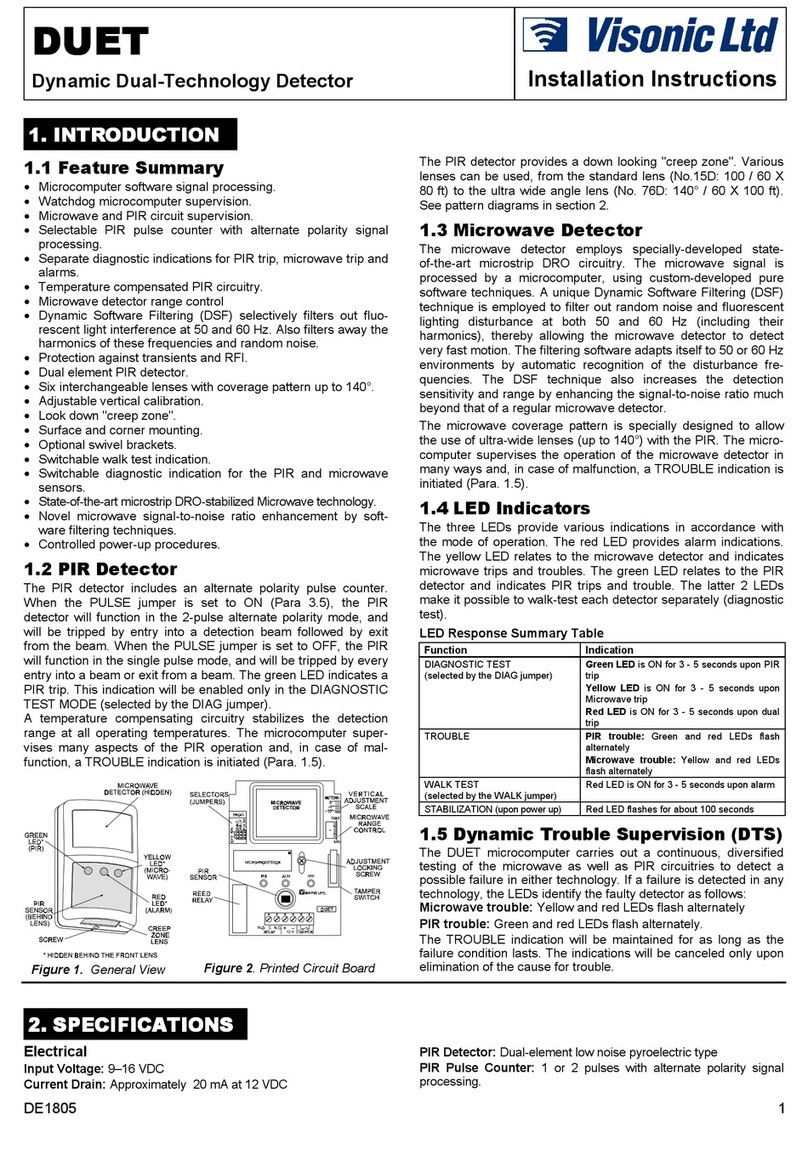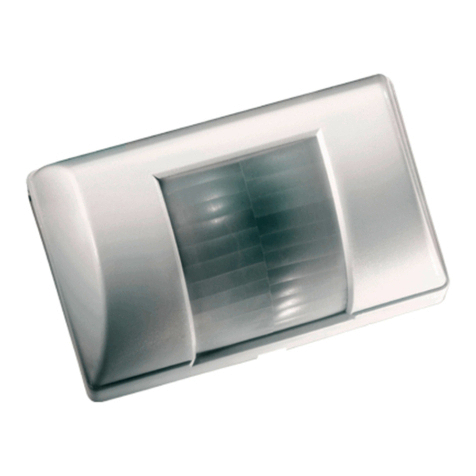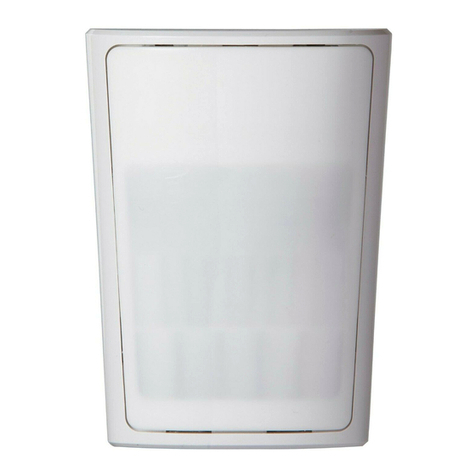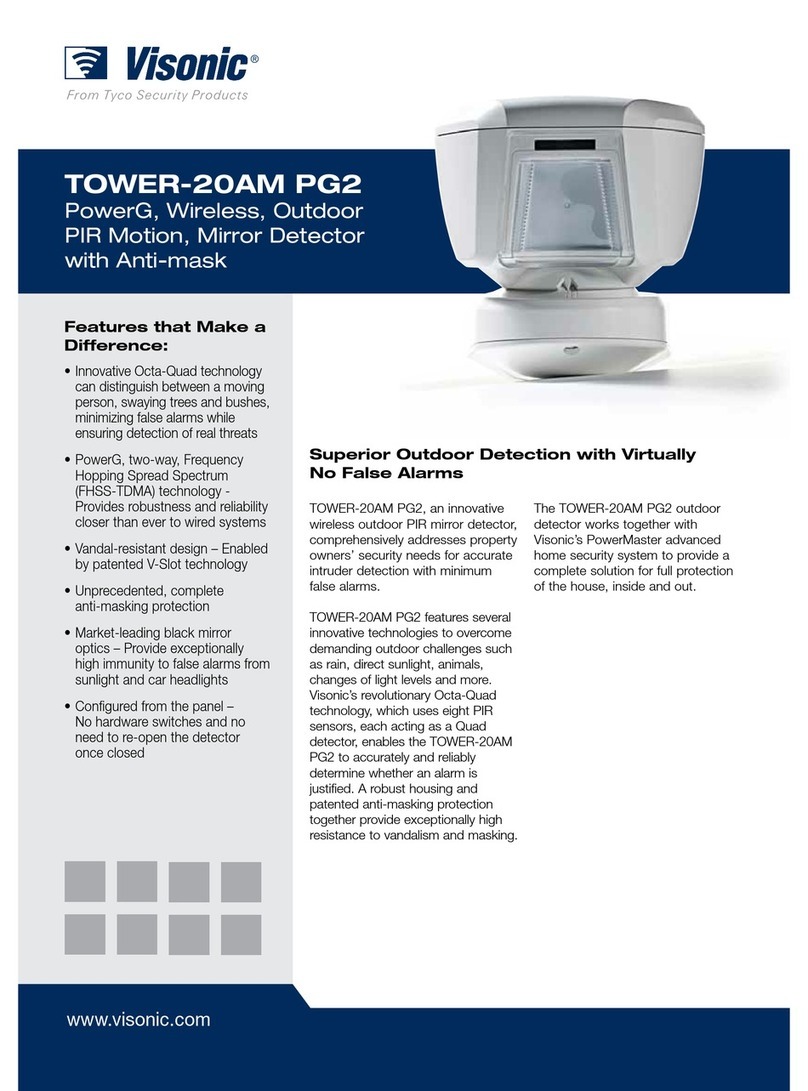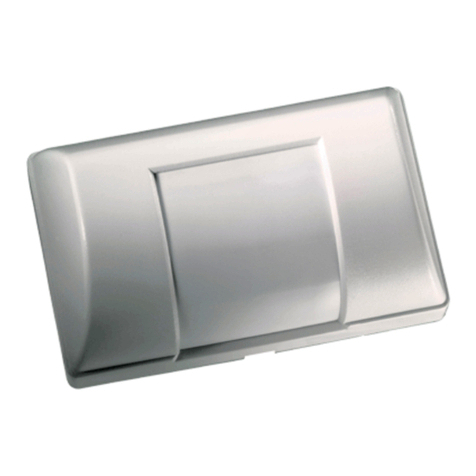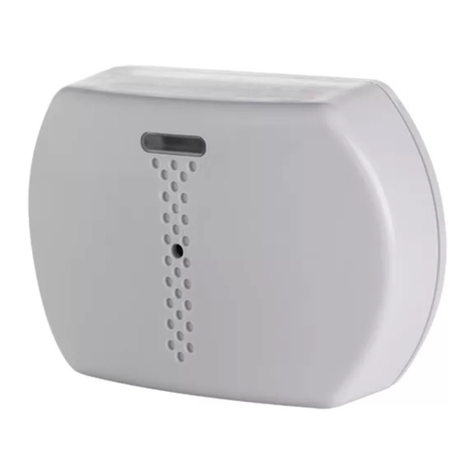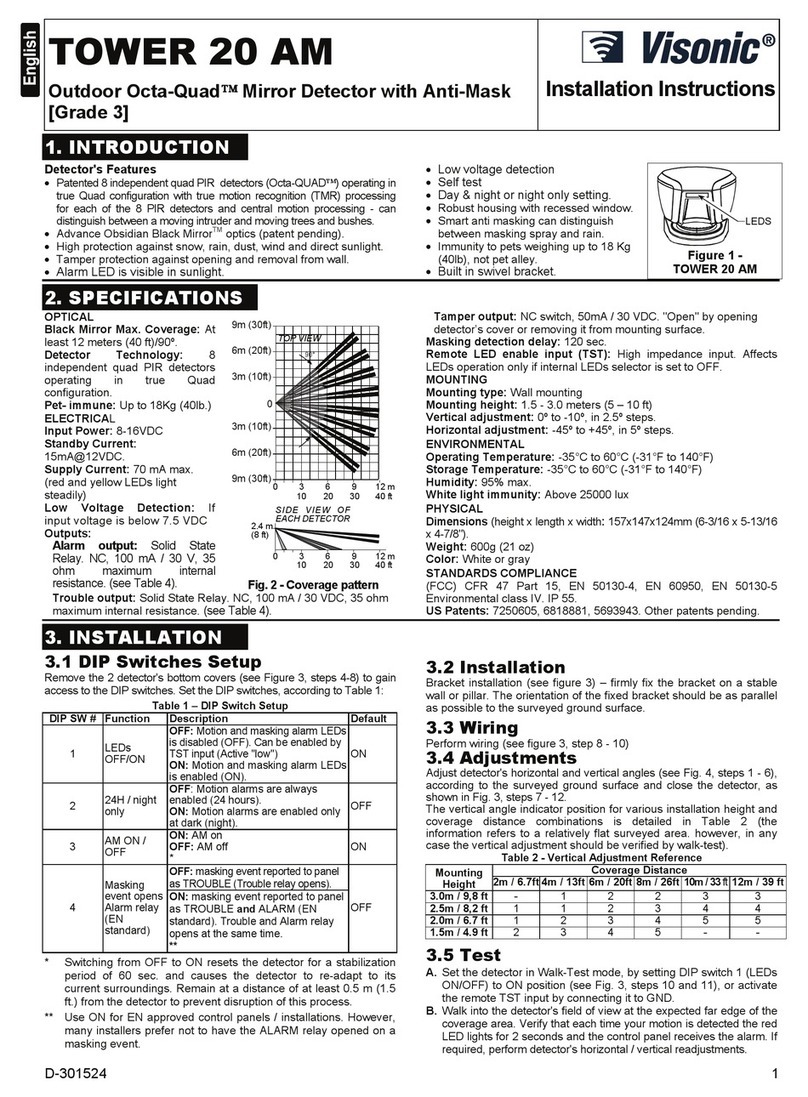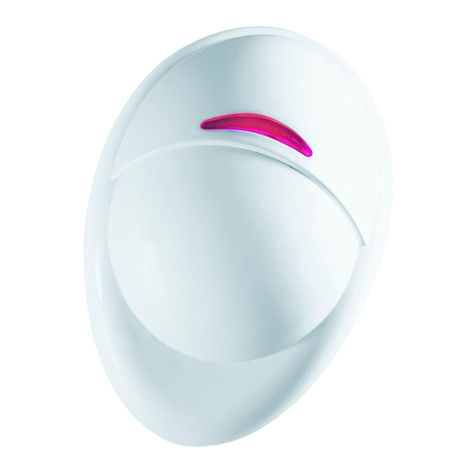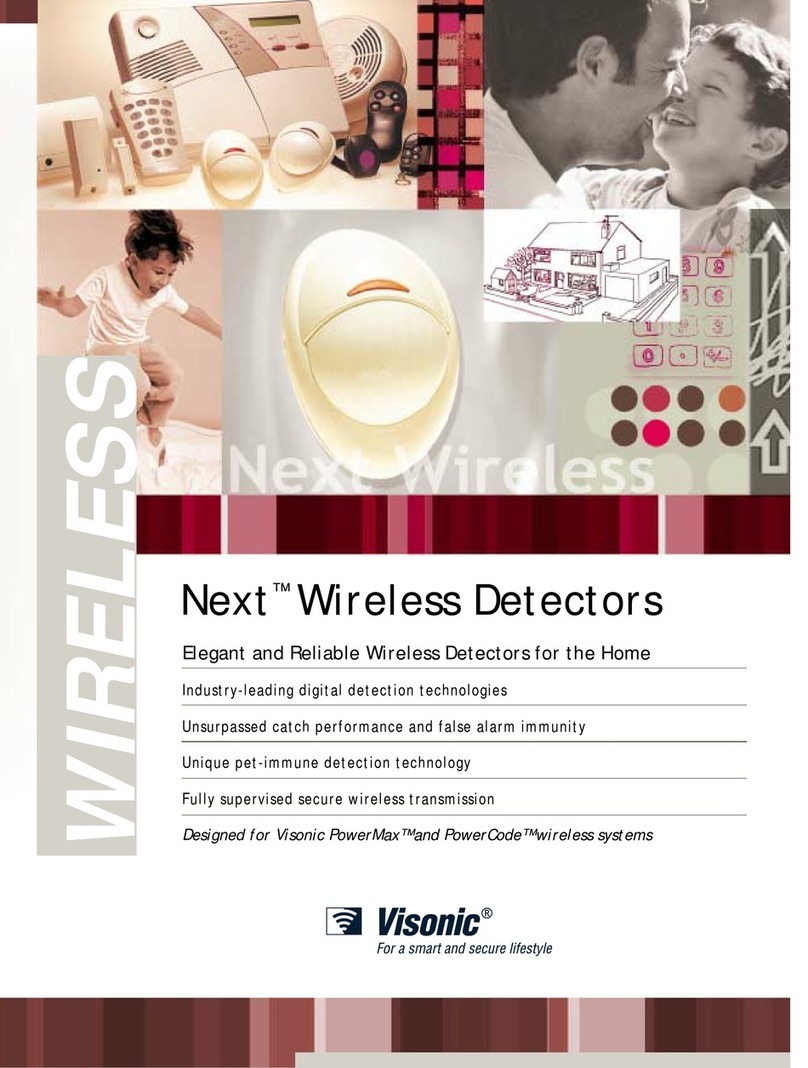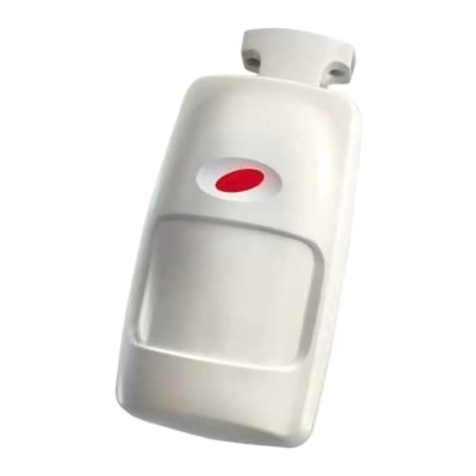
4 D-306173 MP-841 FLAT PIR
COMPLIANCE WITH STANDARDS
The MP-841 detector complies with the following standards:
Europe: EN 300328, EN 301489, EN 60950, EN 50130-4
This detector is compatible with the RED Directive 2014/53/EU of the European Parliament and of the Council of 16
Canada: IC-RSS 247USA: UL-UL639Canada:ULC-S306
WARNING! Changes or modifications to this unit not expressly approved by the party responsible for compliance could void the user’s authority
to operate the equipment.
This device complies with Part 15 of the FCC Rules with Industry Canada license-exempt RSS standard(s). Operation is subject to the
following two conditions: (1) this device may not cause interference, and (2) this device must accept any interference, including
interference that may cause undesired operation of the device.
Le présent appareil est conforme aux CNR d'Industrie Canada applicables aux appareils radio exempts de licence. L'exploitation est
autorisée aux deux conditions suivantes : (1) l'appareil ne doit pas produire de brouillage, et (2) l'utilisateur de l'appareil doit accepter
tout brouillage radioélectrique subi, même si le brouillage est susceptible d'en compromettre le fonctionnement.
To comply with FCC Section 1.1310 for human exposure to radio frequency electromagnetic fields and IC requirements, implement the following
instruction: A distance of at least 20cm. between the equipment and all persons should be maintained during the operation of the equipment.
Le dispositif doit être placé à une distance d'au moins 20 cm à partir de toutes les personnes au cours de son fonctionnement normal. Les
antennes utilisées pour ce produit ne doivent pas être situés ou exploités conjointement avec une autre antenne ou transmett
NOTE: This equipment has been tested and found to comply with the limits for a Class B digital device, pursuant to part 15 of the FCC Rules.
These limits are designed to provide reasonable protection against harmful interference in a residential installation. This equipment generates,
uses and can radiate radio frequency energy and, if not installed and used in accordance with the instructions, may cause harmful interference to
radio communications. However, there is no guarantee that interference will not occur in a particular installation. If this equipment does cause
harmful interference to radio or television reception, which can be determined by turning the equipment off and on, the user is encouraged to try
to correct the interference by one or more of the following measures:
−Reorient or relocate the receiving antenna.
−Increase the separation between the equipment and receiver.
−Connect the equipment into an outlet on a circuit different from that to which the receiver is connected.
−Consult the dealer or an experienced radio/TV technician for help.
Cet équipement génère, utilize et peut émettre de l’énergie de fréquence radio et, s’il n’est pas installé et utilize conformément aux instructions du
fabricant, peut provoquer des interférences dangereuses pour les communications radio. Toutefois, rien ne garantit l’absence d’interférences
dans une installation particuliére. Si cet équipement provoque des interférences nuisibles au niveau de la réception radio ou television, ce qui
peut étre determine par la mise hors, puis sous tension de l’équipment, vous étes invite à essayer de corriger les interferences en pregnant les
mesures suivantes:
−Réorientez ou déplaces l’antenne réceptrice.
−Augmentez la distance qui sépare l’équipement et le récepteur.
−Branchez l’équipement à une prise d’un circuit different de celui auquel est branché le récepteur.
−Consultez le revendeur ou un technician radio/television expérimenté pour obtenir de l’aide.
SPECIAL COMMENTS
Even the most sophisticated detectors can sometimes be defeated or may fail to warn. Possible causes of failure are DC power failure or
improper connection, malicious masking of the lens, tampering with the optical system, decreased sensitivity in ambient temperatures close to
that of the human body and unexpected failure of a component part.
The above list includes the most common reasons for failure to detect intrusion, but is by no means comprehensive. It is therefore recommended
that the detector and the entire alarm system be checked weekly, to ensure proper performance.
An alarm system should not be regarded as a substitute for insurance. Home and property owners or renters should continue to insure their lives
and property, even though they are protected by an alarm system.
W.E.E.E. Product Recycling Declaration
For information regarding the recycling of this product you must contact the company from which you orignially purchased it. If you are discarding this product and not
returning it for repair then you must ensure that it is returned as identified by your supplier. This product is not to be thrown away with everyday waste.
Directive 2002/96/EC Waste Electrical and Electronic Equipment.
EMAIL: info@visonic.com
INTERNET: www.visonic.com
VISONIC LTD. 2017 MP-841 FLAT PIR D-306173 ( Rev. 4, 02/17)
D-306173 MP-841 FLAT PIR 1
MP-841
ZigBee Home Automation 1.2
Wireless Digital Pet Immune PIR Detector Installation Instructions
1. INTRODUCTION
The MP-841 pet immune detector is a microprocessor-controlled wireless digital PIR detector supported by ZigBee Home Automation 1.2.
The detector has the following features:
•Detection distance up to 15 meters (49.2 ft.).
•Uniform Detection.
•White light immunity
•Enhanced Pet immunity up to 85Ibs (Target Specific Imaging™ (TSI) technology patented).
•Enhanced false alarm rejection (The advanced True Motion Recognition™ algorithm patented).
•No vertical adjustment is needed.
•In normal mode, after detection, the detector goes to sleep to save battery power. It wakes again and reverts to a ready state, if there is no
subsequent detection throughout the following 2-minute period.
•Temperature compensation.
•Front tamper protection.
•Black mirror technology provides excellent white light protection.
•Elegantly styled, sturdy case.
2 . SPECIFICATIONS
Dual element low-noise pyro electric sensor
27 “far” parabolic black mirrors (54 “beams”)
9 “near” cylinder black mirrors (18 "curtains”)
Pet immune protection is provided by a specific
optical attenuator on the mirror
15 x 15 m, (49.2 x 49.2 ft.) / 90°
Up to 38 kg (85 lb.) Pet immunity of 85 lb. is up
to 30 ft. (10 m) range.
ELECTRICAL
Internal Batteries
Two 3V Lithium batteries, type CR-123A. For
UL installations, use Panasonic and GP only
Note: Inability to connect with wireless network,
or wireless link quality no higher than 20%
may significantly reduce the expected
battery life.
Performed immediately upon battery insertion
and periodically every several hours.
FUNCTIONAL
Red LED lights for about 3 seconds during
transmission of alarm or tamper messages and
when motion is detected in walk test mode
only.
Red LED flashes during the power-up
stabilization period, or after restoring
(pressing) the tamper switch.
Red LED does not light during transmission of
supervision messages or alarm detection after
termination of walk test mode.
Rearms the detector 2 minutes after the last
alarm. Timer disabled in the walk test mode.
2.405 – 2.480 Ghz as per IEEE 802.15.4
Reported when a tamper event occurs and in
any subsequent message, until the tamper
1.8-2.4 m (6 - 8 ft.). For pet rejection, the
optimal height is 2.1 m (7 ft.)
